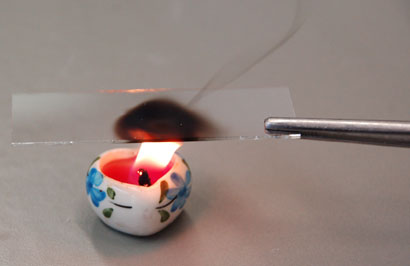A Look at Two Emerging Technologies
The phrase “cutting edge” has lost its luster – there has been such an influx of innovative advancements in the land of technological gadgetry that that to call them “cutting edge” seems a bit of an understatement. From pudding-dispensing vending machines to virtual kissing devices, the sky’s the limit when it comes to successfully overstepping our digital boundaries.
Here are two mind-blowing electronic revolutions that are currently in-the-works:
The Ultra-Thin Battery
Scientists in Korea have developed a battery that is to tiny – and flexible – that it may soon change the world of big-screen technology as we know it (imagine folding up your e-reader or tablet and shoving it in your pocket). While flexible screens are nothing new (many E Ink and OLED screens can be created flexible) – what’s inside them are not so compliant – namely, their batteries.
Take a look at the following video about the new battery which was created by Professor Keon Jae Lee and his team in the Department of Materials Science and Engineering at the Korea Advanced Institute of Science and Technology:
No-Smudge Touchscreen Coating
Touchscreens are a must-have in today’s world. But, unfortunately, the technology has a flaw – smudging – that we all wish tech engineers would just figure out a way to be gone with, already. Well, we might just be on the brink of that revolution since scientists in Germany have come up with a special coating that can be layered onto screen which actually repels oil droplets.
Here’s what the scientists knew:
Oil is notorious for possessing a lower surface tension than water. Because of this, it has been difficult for researchers to create a surface that spurns oil, even though they have known a little bit about the kind of surface texture needed – something akin the material that lines a tree branch
.
So here’s what the scientists did:
They held a microscope glass slide over a candle and collected an amount of soot that measures about 40 nanometers in diameter. So that the soot stayed put, the researched first layered the slide with a silica covering and then baked the slide in a 600 degrees Celsius “oven”, thereby morphing the soot into a transparent substance.
Here’s what the scientists found:
After the slide was pulled from the oven and cooled, they sprayed it with numerous oils to tests its repelling factor. Lo and behold, the experiment was a success: not only did the sheath spurn oil, but other organic substances too. What’s more, the scientists discovered that the covering would stick not just on glass, but to other materials such as copper and aluminum.
Here’s what the scientists concluded:
The scientists’ experiment was a success, in the way of providing a smudge-free surface (which the researchers dubbed “superamphiphobic”). The only downside: the superamphiphobic material is highly vulnerable to scratching. So, while smudge-free tablets are one step closer to appearing on the shelves, scientists will have to go back to the drawing board to address the scratching issue before the final launching steps.
Before having access to flexible, smudge-free devices, the best measure you can take now to protect your favorite electronics is by covering them with a warranty from CPS.


